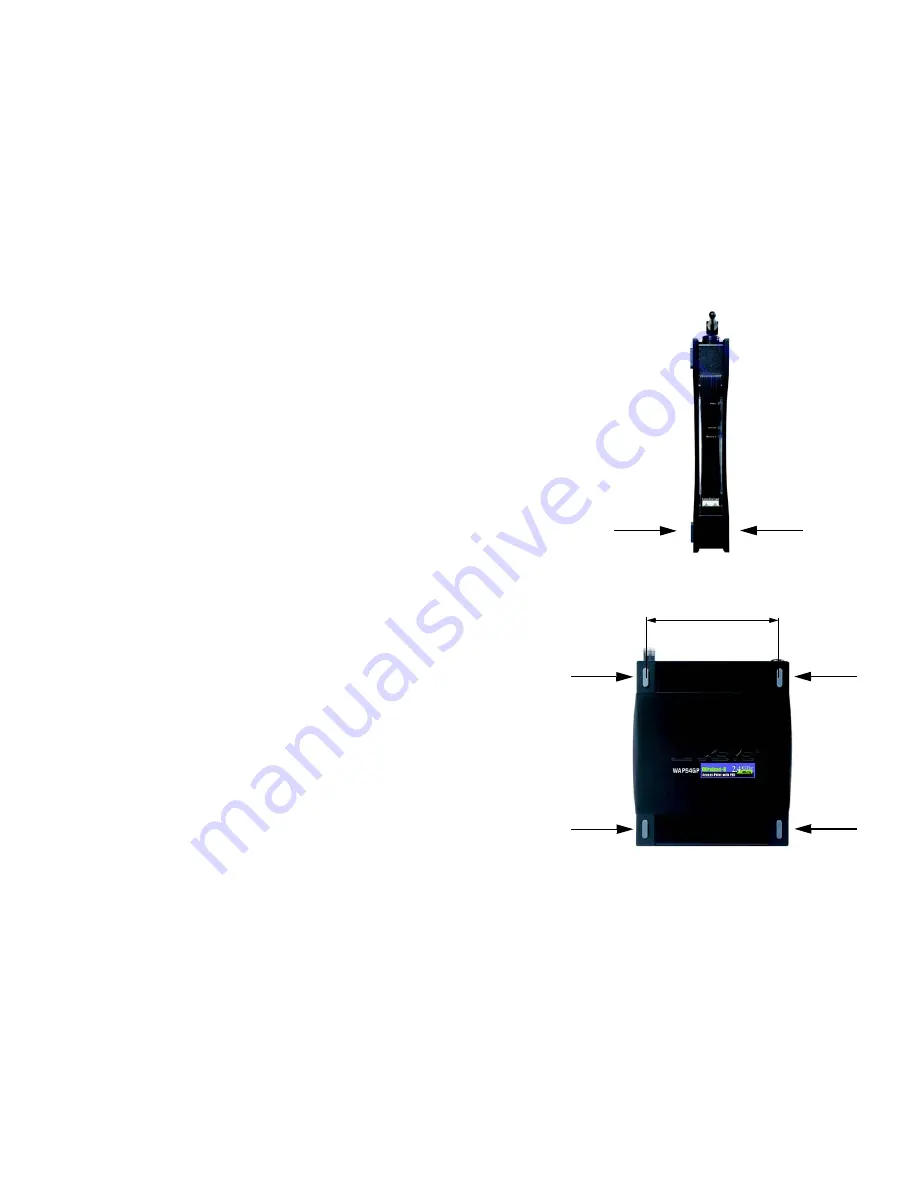
9
Chapter 4: Connecting the Wireless-G Access Point with Power Over Ethernet
Placement Options
Wireless-G Access Point with Power Over Ethernet
Placement Options
There are three ways to place the Access Point. The first way is to place it horizontally on a surface, so it sits on
its four rubber feet. The second way is to stand the Access Point vertically on a surface. The third way is to mount
it on a wall. The stand and wall-mount options are explained in further detail below.
Stand Option
1. Near the Access Point’s bottom panel are two rubber feet and two rubber inserts. Remove them to expose the
stand slots you want to use.
2. The Access Point includes four triangular stands. With its rubber pad facing the bottom, insert a stand into a
slot, and push the stand upward until the stand snaps into place.
Repeat this step with the other stands.
Now that the hardware installation is complete, proceed to “Chapter 5: Configuring the Wireless-G
Access Point with Power Over Ethernet,” for directions on how to configure the Access Point.
Wall-Mount Option
1. On one of the Access Point’s side panels are four rubber feet. Remove four adjacent feet to expose the wall-
mount slots you want to use. The distance between two adjacent slots is 145 mm (5.7 inches).
2. Determine where you want to mount the Access Point.
3. Drill four holes into the wall. Make sure adjacent holes are 145 mm (5.7 inches) apart.
4. Insert a screw into each hole, and leave 5 mm (0.2 inches) of its head exposed.
5. Maneuver the Router so the wall-mount slots line up with the four screws.
6. Place the wall-mount slots over the screws and slide the Access Point down until the screws fit snugly into
the wall-mount slots.
Now that the hardware installation is complete, proceed to “Chapter 5: Configuring the Wireless-G
Access Point with Power Over Ethernet,” for directions on how to configure the Access Point.
Figure 4-4: The Access Point’s Wall-Mount Slots
Figure 4-3: The Access Point’s Stand Slots
145 mm
(5.7 inches)
















































